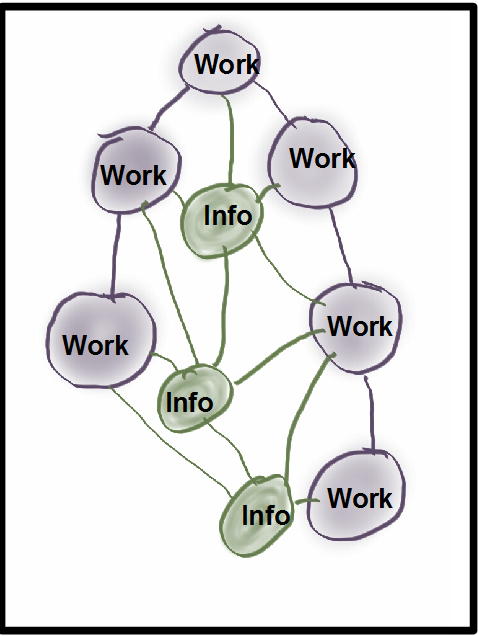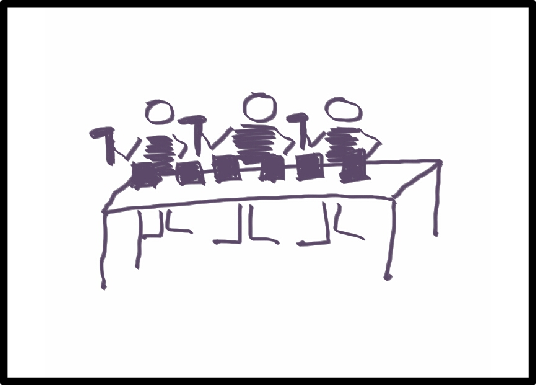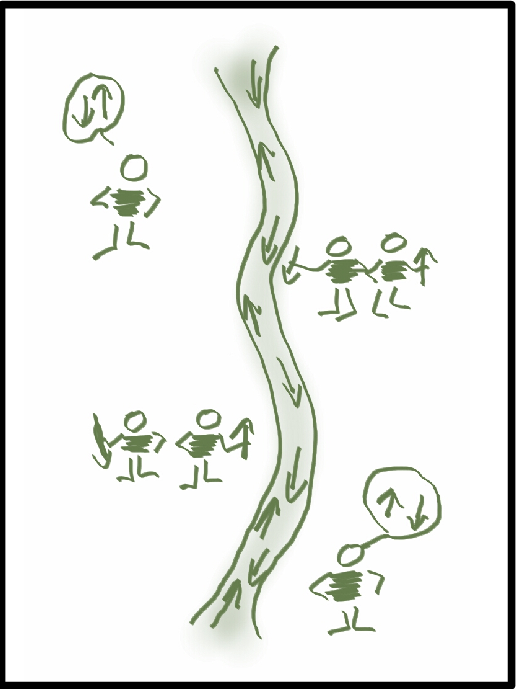I enjoyed attending LKUK13 and would like to share some of the snippets that I found interesting. These are from my notes and are my interpretations – any mis-interpretation is entirely my responsibility and I am happy to receive any corrective feedback.
Mike Burrows – Kanban is like Onions!
- If we organise the work, we make it possible for people to re-roganise around the work
- Ask if any single improvement can benefit the Customers, team and organisation – the improvement is good if all 3 can benefit from it
- To help with paying attention to flow, then keep work sized to see movement every day
- Small acts of leadership – such as the routine from Toyota – leaders can ask
- What is the process?
- How can we see it’s working?
- How is it improving?
- Agreement from people versus agreement between people
Liz Keogh – Cynefin in Action
- Frog thinking vs bicycle thinking – we can take a bike apart and put it back together, and it will work again – not a frog
- We’re discovering how to discover stuff by doing it
- Deliberate discovery – Risk (newest things) first – tell the story that’s never been told
- Focus on how we can quickly get feedback
Edward Kay – Mulit-client Kanban
- The ‘ready’ column makes a good handover point
- Use ‘Help’ tokens to indicate that you need assistance with a story – either with context or skills – so that you don’t interrupt others and they can select their own time to help you
Torbjörn Gyllebring – #NoMetrics – the ephemeral role of data in decision making
- Lines of code is the best metric (and everyone hates this) – great for archaeology, but it’s all from the past
- Ethics – in a position of power, you start to influence people – do no harm
- Our customers are those whose lives we touch
- Clarification should be at the centre of any measurement effort
- Data needs to always be relevant
- Informational measures are useful – but it depends on how people perceive it
- ODIM – a good model – Outcomes, then Decision, then Information, then Metrics – use the metric and then discard it
- Know why you need the data
Yuval Yeret – Kanban – a SANE way towards agile in the enterprise
- When trying to change culture, engage in marketing – identify and nurture opportunities
- Start with leaders and managers
- Need to balance between prescriptive guidance and no guidance
- After a chance allow time to stabalise and recharge – then provide good reasons to get out of recharge mode
Chris McDermott – The Other Side of Kanban
- Encourage shared understanding – not managers are dating agents and chaperones
- Add a ‘ready to celebrate’ column onto the board
Stephen Parry – How to develop Lean leadership and create an adaptive, learning and engaging organisation
- Reciprocity only works when there is a sincere and genuine feeling – does not work if there is a feeling of manipulation – It can be negative
- ‘Dont bring me problems, bring me solutions’ is an example of leadership abandonment not empowerment
Chris Young – Models, Maps, Measures and Mystery
- Asked why customer approval waiting times went up a lot – led to the idea to have customers sit with the developers
- At one stage the customer started leading the standups
- Added an extra column to personal kanban board ‘didn’t happen’ next to the ‘done’ column
Jabe Bloom – What is the value of social capital?
- A value stream is a linear view of the social network
- Swarms – form temporary teams on high-value problems with volunteers
- Emergent slack – have 20% of time spent on interruptible tasks (tasks that no-one is waiting on)
- Social capital is the ability to distribute and leverage trust (reciprocity)
- In a low social capital environment we use consensus models
- In a high social capital environment we trust each other to make decsions
- Authority removes social capital (consumes it)
Jim Benson – Beyond Agile
- Flow if you can, pull if you must (pull systems are all remedial)
- No recipe for success – just a recipe for not likely failing
- Trying to do agile versus delivering value
Zsolt Fabok – I Broke the WIP Limit Twice, and I’m Still on the Team!
- If you understand small, incremental evolutionary changes and pull, then you can decduce the rest
- The goal is to have a stable system – easier to improve it
Alexis Nicolas – Management hacking in progress
- Managers should focus on learning. We can live with problems for 1 or 2 days because we have better risk management
- Change is viral – not prepared planning – we can design a viral change
Troy Magennis – Cycle Time Analytics – Fast #NoEstimate Forecasting and Decision Making
- Statistics is more of a logic problem than a maths problem
- When we forcast, state the level of uncertainty – ask what point would sway the decision
- Every choice we make changes the outcome – Decision induced uncertainty
- Diagnostic models allow us to run ‘what if’ scenarios
- Estimating what could go wrong is more important
- We should update our forecast each time we finish a piece of work because we have learnt more
 Creation and Information Flow Work Intertwined
Creation and Information Flow Work Intertwined

